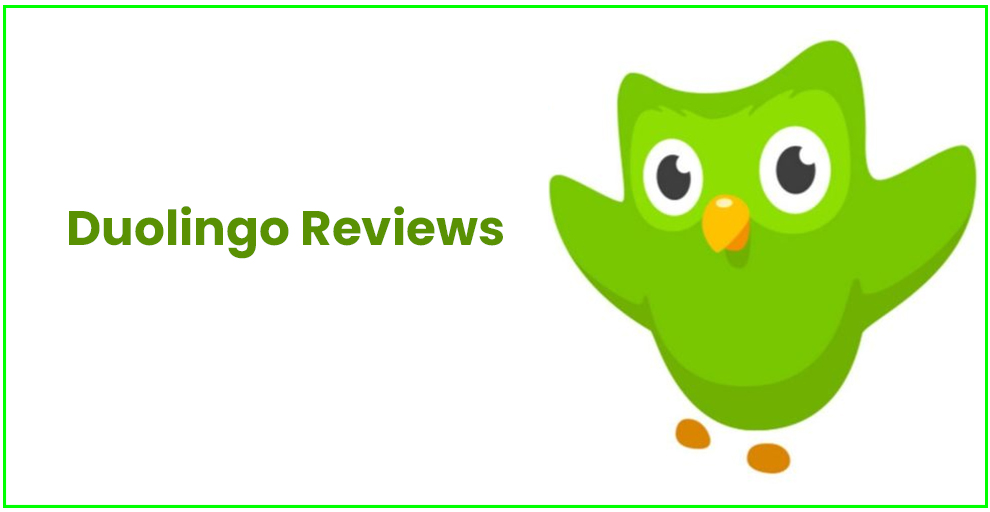Real estate photography may seem like an offbeat topic to many. But it is an inevitable part of the real estate business. Check out the top six courses that can alter your real estate photography skills for good.
Well for me Duolingo sure does work to understand the basics. But it limits itself in terms of contextual, comprehensive lessons for advanced learners.
Duolingo, a well-known language learning app, has undoubtedly had a significant impact on online language education.
In the past couple of years, I have explored multiple language-learning apps and experimented with different methods. Honestly, I didn’t have high hopes from Duolingo but to my surprise, it turned out to be a fun way to learn the basics of a new language.
But it is imperative to give an unbiased assessment of its strengths and weakness, which is what I aim to do with my Duolingo reviews.
When you land on Duolingo, the first thing you will notice is its user-friendly interface. It will ask you whether you have an account or help you create one.
The next thing you got to do is select the language you want to learn.
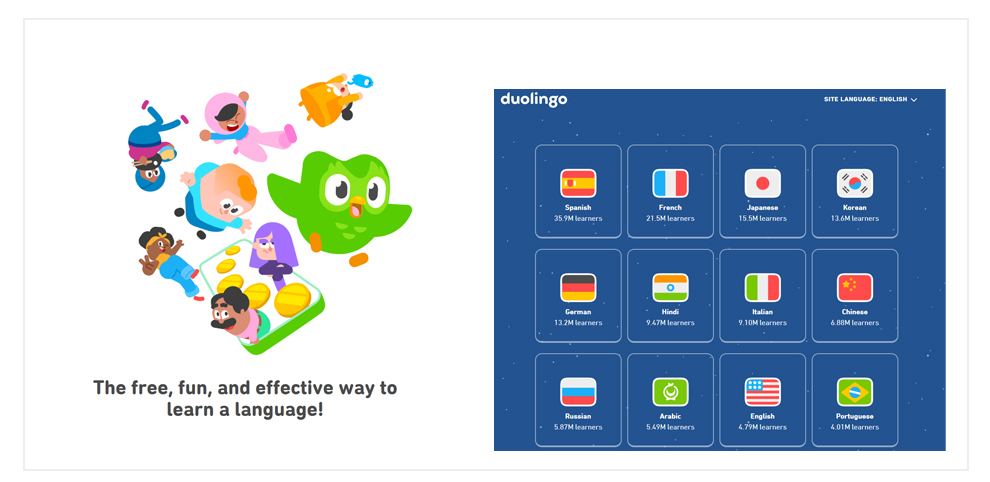
Now it will ask you whether you are a complete newbie or have some idea about your preferred language. If you choose the option “Already know the language,” it will guide you through an assessment test to check your current capabilities.
Trust me, it is an entertaining test. If at all you have any basic idea of the language you are planning to learn, you will sail through easily.
The app’s gamified approach to language learning includes an element of entertainment, making the process feel engaging.
Duolingo incorporates a potpourri of writing, speaking, listening, and reading exercises to enable the users to develop a fundamental understanding of the chosen language.
So is Duolingo good? Definitely but not for everyone! The interactive quizzes and bite-sized lessons keep you motivated and engaged to continue learning.
Further, its accessibility makes it even more likable and convenient for people with limited access to classroom settings or busy schedules. In addition, its free version offers extensive content, making it a lucrative pick for budget-conscious learners.
But Duolingo has its share of limitations. Know that you cannot master a language just through an app in a few days.
Yes, it can be helpful if you are trying to get familiar with a language, or maybe someone who needs a base before getting into advanced programs. In any way, you cannot expect to become an expert just with Duolingo.
Continue reading as I uncover every tiny detail about Duolingo you must know.
How Good Is Duolingo – A Peek Into Duolingo
| Duolingo languages | 40 |
| Level | Best for beginner |
| What can Duolingo best be used for? | Learning new languages, vocabulary, and basic grammar |
| Pricing | Free with optional Duolingo Plus subscription ($6.99) |
| Trial Period | 14-day free trial for Plus subscription |
| Mobile App | Yes (Android and iOS) |
| Visit | Duolingo |
Can You Actually Become Fluent With Duolingo?
Duolingo is a premier no-cost language-learning app. However, it falls short of propelling you to conversational prowess or fluency, leaving many to wonder, if it is the right fit for you.
In all honesty, the app has multiple exercises that facilitate substantial daily practice and learning in a new language, but expecting fluency solely via Duolingo is a little unrealistic.
But the app excels in delivering foundational knowledge and promoting regular engagement. You can get well-versed in the language basics and acquire vital skills.
But for fluency, you must supplement Duolingo with immersive experiences and additional resources focusing on real-world language usage and conversation.
What Is Duolingo Good For?
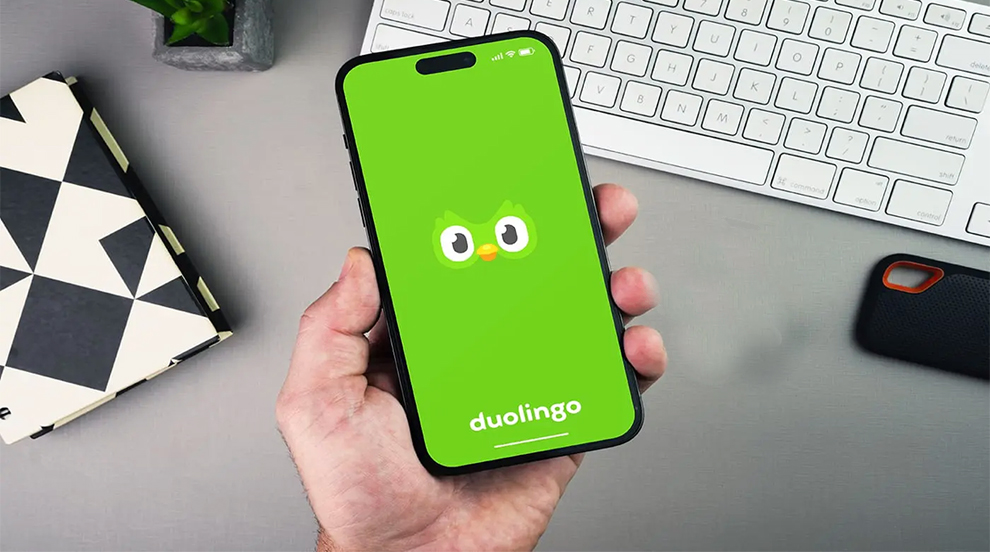
Read below what I liked about Duolingo the most:
1. Gamified learning: No points for guessing that with its gamified learning experience, it kept me hooked throughout.
I especially liked the reward system, including progress tracking and daily learning streaks. It nudges the users to practice daily and maintain their momentum.
2. Accessibility and flexibility: Duolingo offers the convenience of learning anytime, anywhere, and at your own pace. But you would say, what is so special about it? All e-learning platforms provide that.
Duolingo’s availability on smartphones and its offline mode feature is what makes it special. Take my word for it. After checking out different language apps, I give full marks in my Duolingo reviews for its features maintained in both web form and app.
3. Free and cost-effective lessons: The free version of Duolingo provides you with an extensive selection of content, making it a suitable choice for those on a budget.
Unlike expensive language-learning programs, it is a good place to begin with.
4. Contextual learning approach: Another thing I would like to highlight is that the platform focuses on teaching via context, which amplifies retention and comprehension.
Instead of rote memorization, the app has grammar and vocabulary points in real-life scenarios. This approach allows the learners to communicate effectively and understand better.
5. Regular updates and feedback: Duolingo works on getting better. It is evident via their regular updates and user-driven contributions. Learners can report errors, suggest improvements, and contribute to language courses.
This perennial refinement ensures the app remains updated, accurate, and engaging. If you’re an passionate internet user just like me, you must have noticed this in other Duolingo reviews as well.
What Are The Disadvantages Of Duolingo?
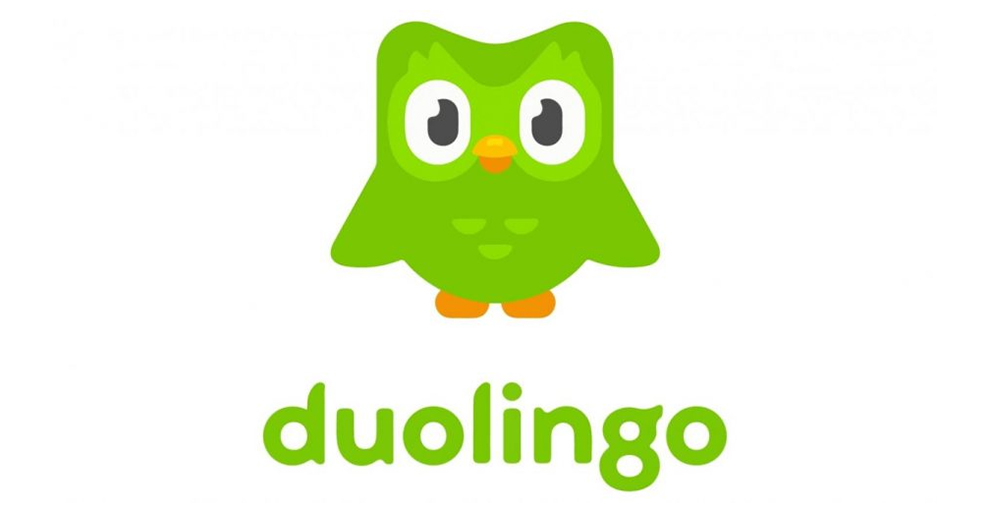
Well, I have been in awe of Duolingo but there is always scope for improvement. As I said, every online platform, and for that matter even Duolingo has a flip side.
Some cons associated with Duolingo are as follows:
1. Non-English speakers have limited options: Sadly, Duolingo predominantly caters to English speakers and has limited options for other language speakers hoping to learn a new language.
On the page’s top right corner, you can select your mother tongue in the “I speak” section. Once you choose your spoken language, you get the options of languages you could learn.
2. Not the best for advanced learners: Duolingo is predominantly an app for beginners. So, is Duolingo effective? It is a good platform but lacks comprehensive lessons that advanced learners might want.
Thus, acquiring fluency or reaching an intermediate level with Duolingo alone can be challenging.
3. Gamification focuses on language learning: While it may seem like a pro for many, it can be a con for some, as the gamified approach might not effectively impart communication skills in the language.
For me, it didn’t turn out to be a negative thing. But the focus on game elements overshadows the practical skill development necessary for real-life interactions for many.
4. Limited depth: Though it covers elementary phrases and vocabulary, my honest Duolingo reviews are that it does not have depth in grammatical rules and explanations for sentence structure.
Sadly, non-European scripts, like Mandarin, Korean Hangul, Russian, Japanese, or Cyrillic, are not effectively taught. It can hinder learners who aspire to comprehend and employ these scripts.
5. Targeted more toward the younger audience: The app’s focus on incorporating animations and cartoon characters may appeal to younger users and children.
Adults seeking effective learning methods may note the absence of face-to-face interaction, natural-sounding conversations, and intermediate lessons disappointing.
6. Variety of languages: Duolingo provides lessons for 40 languages only. Presently it offers popular languages, such as Italian, German, French, and Spanish, but it also covers lesser-known languages like Esperanto, Irish, and Ukrainian.
I found what I was looking for, but you may or may not find it in their limited selection.
Beyond this, when I went to see what others have mentioned in their Duolingo reviews, it highlighted a few other disadvantages associated with the platform. These include:
- Issues with speech recognition software.
- Constant skill decay can be discouraging.
- Some translations in the app may not seem natural.
- Premium features can be costly, and losing a practice streak can be demotivating.
Is It Easy To Get Started With Duolingo?
It was a breeze to get started with Duolingo for me. The user experience and user interface were visually appealing and intuitive.
To create my account at Duolingo, I followed a three-step registration process. Started by picking the desired language and state your motivation for learning it.
Further, I chose a daily goal from options such as Casual (5 minutes), Regular (10 minutes), Serious (15 minutes), or Intense (20 minutes).
Next, I just signed up with my Facebook. You could also create your account using Gmail. I agree with most Duolingo reviews stating that its interface is minimalist and easy to comprehend.
Even kids can begin their language learning journey here.
How Are The Lessons At Duolingo?
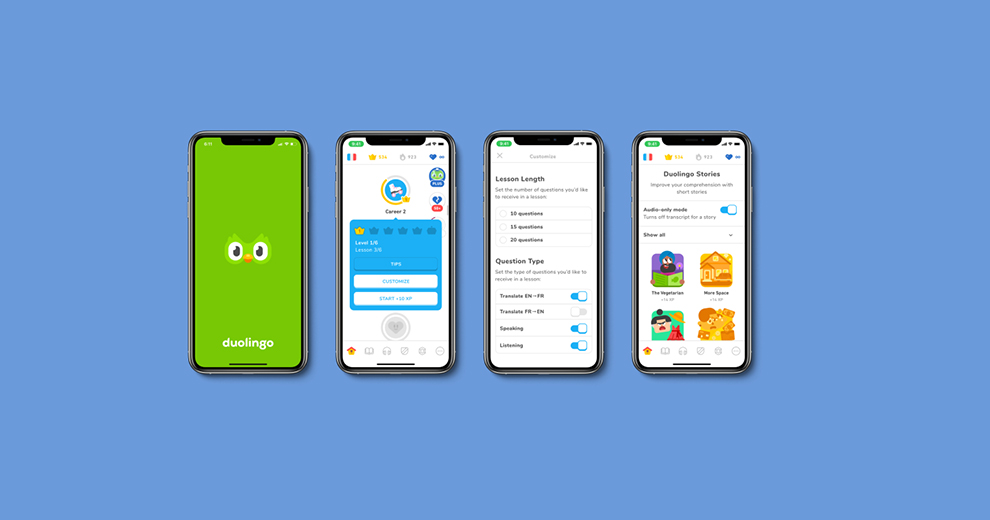
To my surprize, Duolingo presents an organized and structured learning experience. The home screen has modules that follow a specific order and cover topics like themes and grammar.
Every module has several lessons that take around three to four minutes to complete.
Progression is typically chronological, but users can revisit the previous class anytime. Words and concepts learned earlier reappear across the course with new words highlighted.
You can take the practice tests (indicated by the dumbbell icon) to review your learning. Each module has several levels, and completing them turns the icon into a gold coin.
However, I am not satisfied with the limited content at each level. I wanted to give a five-star Duolingo review, but here I possibly can’t.
Duolingo’s Worth Mentioning Features
Beyond Duolingo’s short lessons, what I loved about Duolingo were some unique features.
One of the notable features is the ‘Revise the Difficult Words’ attribute.
It allowed me to review challenging words, helping me reinforce my understanding and retention of difficult words.
Further, Duolingo also has audio lessons and podcasts. I am not a fan of podcasts, but these resources were good to listen to. It included authentic conversations and stories in the target language.
Engaging with real-life situations and native speakers, really helped me accentuate my listening comprehension skills and become well-acquainted with the language’s natural flow and pronunciation.
So, is Duolingo good? Yes. These features collectively make Duolingo an effective and enjoyable platform for language learning.
What About Duolingo’s Pricing?
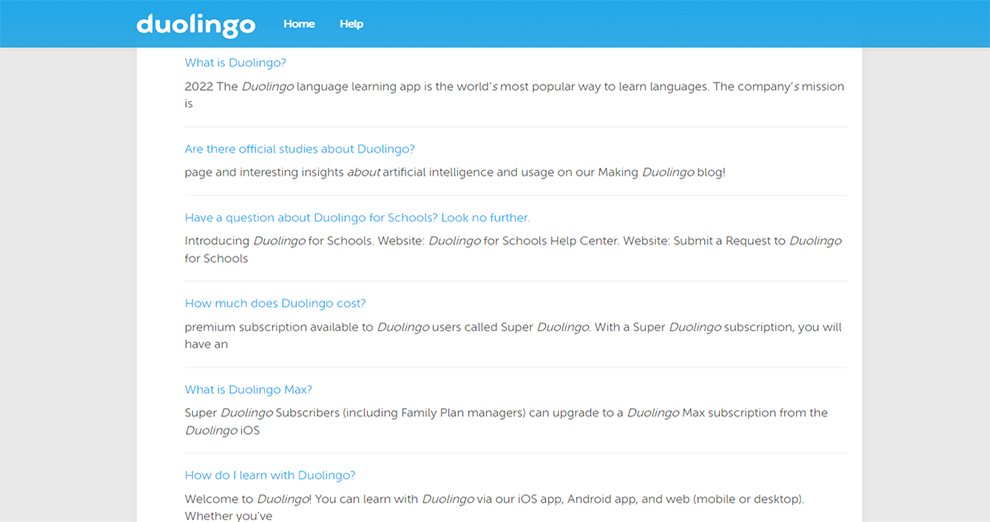
You get a free and paid version called Duolingo Plus. The free version lets you view the app’s content, including features, stories, and lessons. It is ad-supported, meaning you may find pop-up advertisements during the learning sessions. But you can ignore these ads.
I opted for the free version only. It was always the smart thing to do.
The Plus subscription from Duolingo costs $6.99 per month. Alternatively, if you bill month-to-month, you will pay $12.99. Is Duolingo effective without the paid option? I think yes, it’s better off without it.
Opting for the Plus subscription gives you access to offline content, an ad-free experience, take skill test-outs, and unlimited hearts to track mistakes in lessons.
Moreover, the subscribers also have their monthly streaks repaired if they miss a day of practice.
But you can acquire most benefits from Duolingo Plus for free with some workarounds. For instance, you get unlimited lessons if you use the browser version.
Also, you can track your progress via the Duome website. So is Duolingo worth it if you decide to pay the subscription cost? Not really! Given the availability of the free alternatives, the Plus subscription may be unnecessary for most users.
Here is a quick breakdown of the cost:
| Attribute | Basic or Free | Plus |
| Cost | Free | $6.99 per month if billed annually or $12.99 monthly |
| Ad free | No | Yes |
| Offline access | No | Yes |
| Unlimited hearts | No | Yes |
| Skill Test-outs | No | Yes |
Community Learning – Duolingo Incubator Program
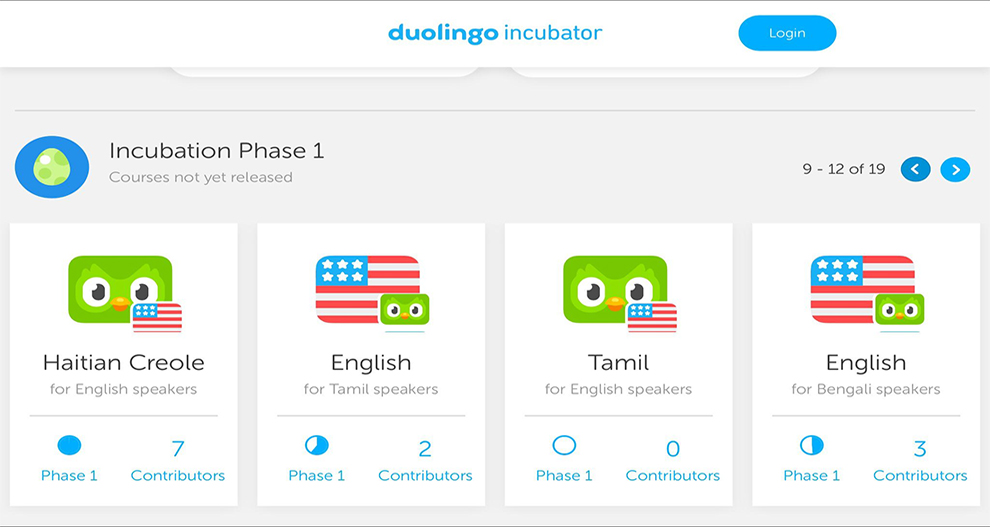
This is something that got my attention. Duolingo introduced the ‘Duolingo Incubator’ program that addresses the limited availability of courses in lesser-known languages.
This initiative allows the community members to collaborate and volunteer to create classes for the languages not included on the platform. I find the concept interesting.
Broadly, it has three parts:
- Phase 1: Courses not released yet.
- Phase 2: Courses released in beta.
- Phase 3: Courses graduated from beta.
Courtesy of the dedication of 1000s of volunteers, Duolingo has expanded its language offerings and benefited from word-of-mouth advertising via its community involvement.
So, how good is Duolingo’s incubator attribute? It can vary significantly. You will note different voices in pronunciation audio that may not be clear for all users.
Some courses might include dialects, regional vernacular, or slang that take you away from the standardized approach found in official lessons.
While Duolingo incubator programs welcome diversity, it does not have a standardized flow and reliability for every language because of the inherent challenges of community-driven development.
Is Duolingo Effective For All Learners?
Duolingo’s usefulness may vary for different learners. While their app offers an engaging and gamified learning experience, its effectiveness depends on the learner’s language learning goals, commitment to consistent practice, and preferred learning style.
The app primarily focuses on basic sentence structures and vocabulary, but it might lack in-depth explanations for the cultural nuances or grammar rules.
If you ask me ‘Is Duolingo good,’ according to me, you can use it as a supplementary tool for casual or beginner lessons, but for more advanced lessons, you might require additional resources to develop your language skills.
Duolingo Alternatives – Where Does Duolingo Stand In The Race?
Mondly, Duolingo, Busuu, and Pimsleur are popular language-learning apps with unique attributes.
I have tried my hands on each of them for different languages. With Duolingo, you get a gamified learning experience and many language options.
On the contrary, Mondly focuses on interactive conversations, something missing with Duolingo and often evident in Duolingo reviews as well.
Pimsleur concentrates on audio-based learning and focuses on pronunciation, and Busuu provides a personalized study plan and the ability to practice with native speakers.
You do not get an in-depth explanation of cultural nuances and grammar in Duolingo, whereas Busuu and Mondly have relatively more comprehensive lessons.
Pimsleur is primarily audio-based, which may not suit visual learners. The choice between these apps depends on individual preferences and learning goals.
Related: Memrise vs. Duolingo | Mondly vs. Duolingo | Rosetta Stone vs. Duolingo | Rocket Languages vs. Pimsleur | Busuu vs. Babbel
According to What Others Have to Say Is Duolingo Effective for Them Equally?
See I have my own opinions about Duolingo but I went on analyzing what others have to say on Trustpilot, Sitejabber, and even Reddit.
From the user reviews, it is evident that Duolingo has many positive attributes that users appreciate.
Their user-friendly interface, gamified approach, and quiz format make language learning engaging and fun. Users also love Duolingo’s tools that make it easy to set personalized goals and track progress via notifications and streaks.
But there are some criticisms, too, such as simplified language instruction, the limited number of languages and vocabulary, and technical issues with progress tracking.
Some users have also pointed out their frustration with customer support and the absence of elementary attributes in some languages.
Is Duolingo Worth It – Final Verdict
Whether Duolingo will serve your purpose depends on your language learning preferences and goals.
As a free app, it provided me with the perfect experience that didn’t make me lose interest in the language. So, it can be an excellent starting point for beginners like me.
It offers an array of languages and covers basic grammar, but it lacks cultural context and in-depth explanation.
Their Plus subscription removes ads and provides a few additional features that may not be necessary for everyone.
So if you need a comprehensive or advanced learning experience, you may want to skip Duolingo or supplement it with other resources. But as a free app, it is a valuable tool for casual learners, kids, and beginners. From my end it’s a thumps in Duolingo reviews but only for beginners.

